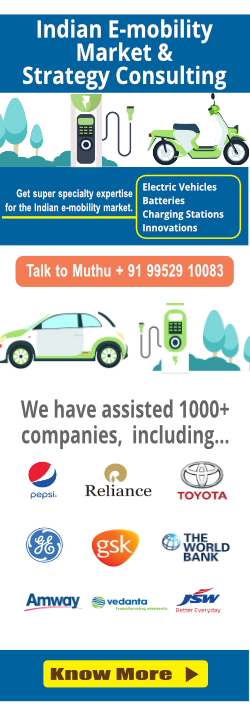Vineeth Vijayaraghavan, editor of Panchabuta, recently did an interesting and thought provoking interview with Steve Sawyer, Secretary General of Global Wind Energy Council (GWEC) on the occasion of GWEC’s organizing the Wind Power India event along with IWTMA (Indian Wind Turbine Manufacturers Association).
GWEC was formed in 2005, born out of a need for global representation for the wind power industry. It has since then been closely interacting with various regional wind power organizations (such as IWTMA, EWEA, AWEA etc) and governments to accelerate the growth of this important renewable energy sector.
While GWEC’s activities have indeed resulted in significant progress for the sector, Steve is candid enough to admit that agreements and consensus between governments on green power and sustainability are difficult, energy being such a fundamental topic directly a direct bearing on the growth and development of a nation. I’d tend to agree with him – while many countries in Europe do tend to take the renewable energy targets rather seriously, countries such as India are not at the same stage of development. I guess we have more basic things to worry about in India than being worried about saving the planet! It is pretty much Maslow’s Hierarchy of Needs in action.
One interesting insight Steve shares while discussing his interactions with the governments are his experiences with the Chinese government, during the formulation of the China Renewable Energy Law. Contrary to what many of us in India would think, Steve feels that the Chinese government had been very open in its need to get new ideas and use them in formulating better frameworks. Of course, the final decision rests with them, but it is indeed laudable that they take international experts seriously. I am sure India can take a leaf out of this. As Steve says, while every country’s situation is indeed unique, there is a lot that is common between c0untries while trying to make renewable energy work, so learning from other regions and cross-pollination of ideas will be of tremendous importance.
To a question from Vineeth on what he felt about predicting India and Brazil as key markets for the growth of wind power, Steve admits that while they were bullish about the growth of these two markets when these predictions were made, things have not turned out so positive in either market (see here and here). All the same, Steve exudes optimism about the growth prospects in these markets, especially when compared to slowdown in many others. As he says, unless the wind industry companies are able to find another China, it will be difficult to ignore Brazil and India.
Specifially in the context of India, Steve is keen to see the Indian market achieve much higher levels of wind power penetrations; this was one of the key targets towards which GWEC had been working together with IWTMA for quite a while now.
And the Indian wind power industry (not just the wind farms) have indeed grown, with several large OEMs (Global companies – 1, 2, 3, 4, 5 and of course our own 6, 7) and component makers setting up manufacturing facilities here. Steve feels such a growth is to be expected in an industry where logistics and transportation are cumbersome and expensive and manufacturing close to large markets make logical and strategic sense.
Finally, to a question from Vineeth on how India could reach the next orbit in wind power, Steve feels that the focus should be on infrastructure development, especially in the context of transmission and distribution (many wind farmers, especially in South India, will surely agree!). Another insightful point he makes is the need for cooperation and coordination between federal and state governments – while the growth of the wind power industry undoubtedly has been from key initiatives from the state governments so far, with the rise of IPPs and with larger ambitions, I am sure most of would agree with Steve’s assertion that it is time for much higher coordination between the central and the state governments.
He also feels (as would many of us) that the recent trends in generation-based-incentives (GBI) and renewable energy certificates (RECs) (see here and here) hold significant importance for the growth of the IPP sector. The IPP (independent power producers) sector, in my opinion, has the potential to take the wind power industry in India to the next order of magnitude growth compared to the private investor led growth, which was purely motivated by accelerated depreciation (AD) benefits.
And finally, how does Steve feel the Wind Power India exhibition and conference organized by them and IWTMA could be of use to international companies in the wind power value chain? This answer is fairly unsurprising: Despite the current slowdown in growth, India is one of the largest and fastest growing markets for wind, both for wind power production as well as development of the entire wind turbine manufacturing ecosystem. With Wind Power India being the country’s largest show for the sector, any company worldwide operating in the wind power sector should find this event an important one in their business development activities.
Success is finally about making hay while the sun shines and growing your business where wind blows the most.
==
Interested in buying/selling wind farms in India? Talk to the experts at EAI Wind B2B (also this)







